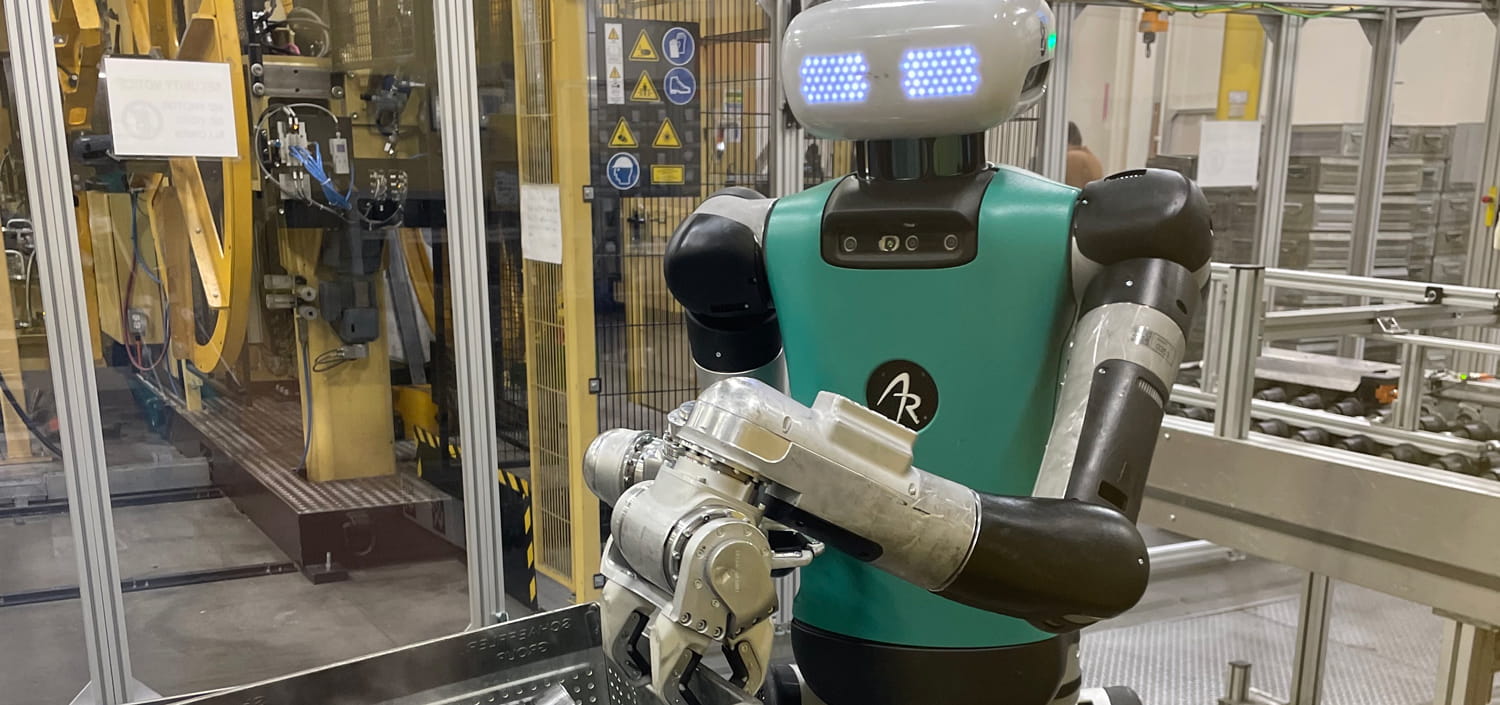How humanoid robots and AI combine to drive a modern Gilded Age of manufacturing.

The Gilded Age of American manufacturing once faded as supply chains stretched globally. Now, the tide is turning dramatically: since 2021, over a half-trillion dollars has been invested in reshoring production back to U.S. soil. This homecoming is strategic, but it arrives with major hurdles, most critically a persistent and widening labor shortage. To make this reshoring wave successful, America must fundamentally rethink how it builds things, carefully investing in the right automation and technology. The exciting news is that technology is finally here. Leading the charge are AI empowered humanoid robots. Intelligent and adaptable partners poised to redefine how we work and power the next great era of American industry.
The past five years have been a stark reminder of the fragility of global supply chains. The pandemic's ripple effects, combined with geopolitical instability, have spurred a significant shift in thinking. Causing a number of companies to prioritize nearshoring and onshoring, particularly within the vital manufacturing sector.
We're seeing concrete action, with numerous businesses announcing plans to bring production back to the U.S. or establish new facilities in neighboring countries. This isn't just a simple relocation; it's a once-in-a-generation opportunity to architect more resilient and automated operations, reducing our reliance on distant suppliers for essential goods and technologies.
When these companies consider where to plant their manufacturing roots, the choice between brownfield (repurposing existing industrial sites) and greenfield (building on previously undeveloped land) presents distinct pathways.
Greenfield manufacturing facilities represent an unparalleled opportunity: a chance to build the manufacturing facilities of tomorrow, today. Starting with a clean slate – undeveloped land – allows manufacturing companies to design and construct facilities entirely around the principles of efficiency and cutting-edge automation. When you're not constrained by existing infrastructure, the possibilities are truly limitless.
For these new ventures, incorporating the latest and most efficient technologies like humanoid robots from the very beginning, is not just an option – it's a necessity. By strategically integrating state-of-the-art systems from day one, greenfield facilities can achieve remarkable levels of operational performance.
Additionally, the unique capabilities of humanoids make them incredibly valuable in brownfield sites as well. These robots are specifically designed to navigate and operate in spaces built for people- working around existing infrastructure built specifically for the human form factor.
General purpose humanoids like Digit, leverage AI to learn new skills. For example, we recently released a whole-body controller that functions much like the motor cortex in the human brain, controlling involuntary movements and fine motor skills. The model was trained using NVIDIA Isaac Sim, a reference robotic simulation framework built on NVIDIA Omniverse, performing decades of simulated work in just a few days in the real world. Along with learning new skills we are using AI to enhance Digit’s existing core capabilities, such as ensuring Digit can traverse varied terrain and handle environmental disturbances, often found in brownfield manufacturing facilities.
This ability to learn and harden existing skills offers a powerful solution for integrating advanced automation even within older, established facilities, helping manufacturers achieve operational resilience without the massive capital expenditure and time required for a complete greenfield rebuild.
The logistics of reshoring and rebuilding manufacturing facilities are only the tip of the iceberg. In 2022, reshoring operations in the U.S. added an estimated 350,000 unfilled jobs, surpassing the previous high of 265,000 in 2021. This accounts for 38% of the 1.6 million jobs added to the U.S. economy from reshoring since 2010. Jobs in the supply chain and logistics industry have suffered from extreme labor shortages for years, making it a significant problem in the logistics space within the United States. Forbes reported: “Turnover at warehouse sites typically runs at 300% to 400% annually, according to various industry statistics.” We're bringing the work back, but the skilled workforce we need isn't always there.
So, how can we bridge this widening gap? Automation offers a powerful solution by taking on the repetitive, low-value, and sometimes even dangerous tasks that often deter workers from pursuing manufacturing careers. But here's a fresh perspective: automations like Digit can and should be viewed as recruitment tools in their own right.
Imagine a workplace where robots handle the most physically demanding or monotonous jobs, freeing up human workers for more engaging and higher-level responsibilities. This isn't a dystopian vision of robots taking over; it's an opportunity to create more attractive and sustainable manufacturing careers.
Now more than ever, there is much to consider when thinking about automation options in manufacturing facilities. The industry is undergoing a monumental change that hasn't been experienced in decades. This moment in history has two players: those who will take advantage of the changing times and those who will miss an opportunity. Embracing new automation technologies is not just a matter of staying competitive in today’s rapidly evolving landscape; it is also about adopting the newest technology to keep facilities efficient, which in turn substantially reduces operating costs.
